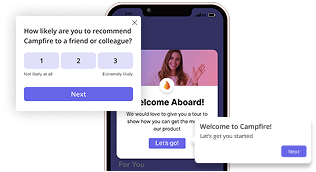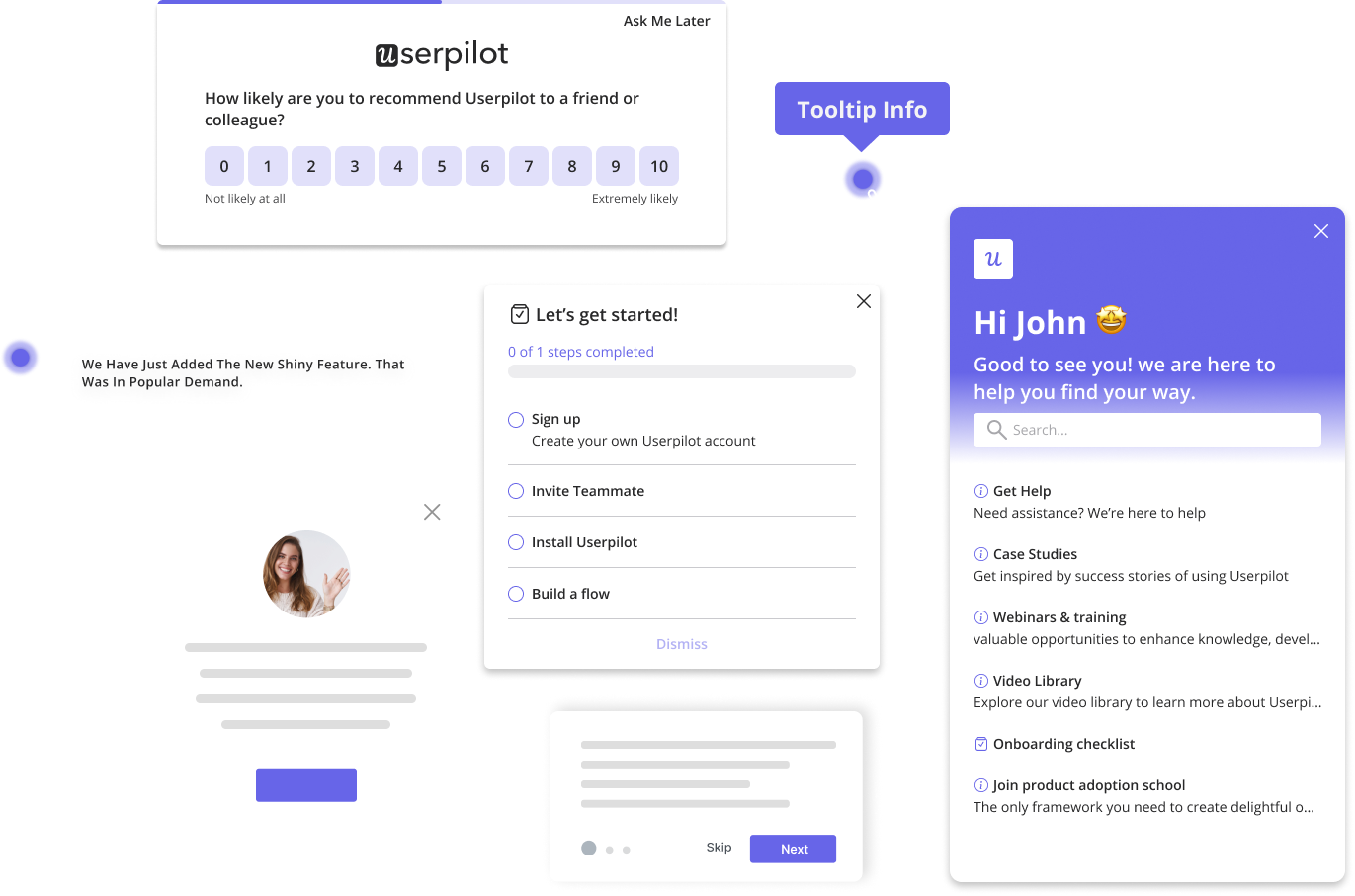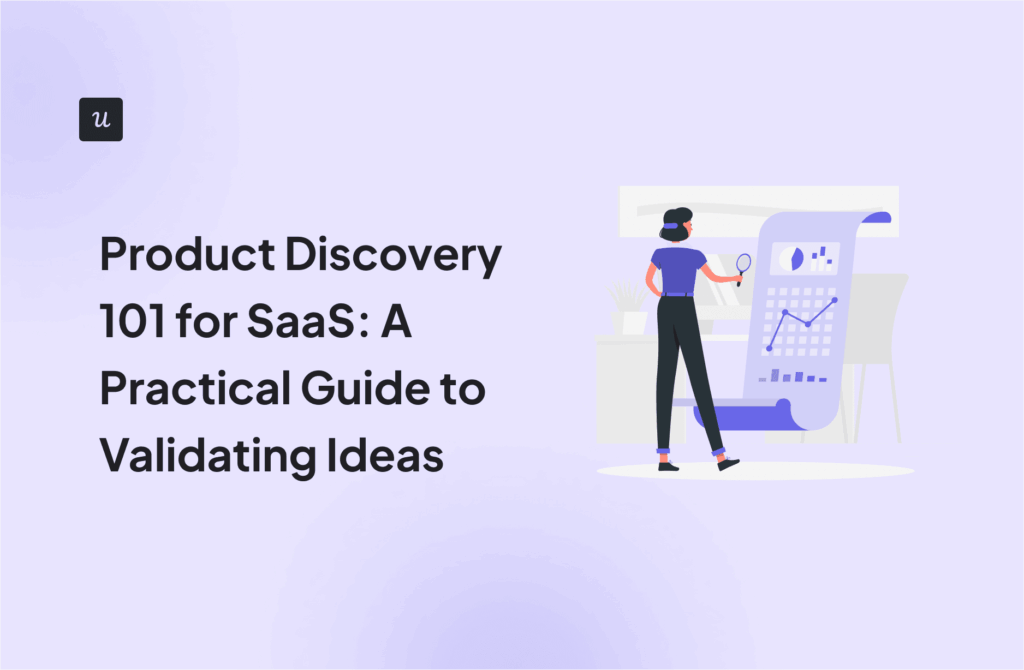
Positioning is one of those marketing concepts everyone nods along to, but few really get right. How do I know? Product and marketing teams throw the word around in strategy meetings, yet many SaaS websites still feel like copy-paste versions of their competitors.
This guide will break down what positioning really means in SaaS and how it differs from messaging and branding. You’ll learn how to spot the red flags of weak positioning, see real-world examples of companies that nailed it, and get a practical template for crafting your own positioning statement.
Along the way, we’ll look at common mistakes to avoid, how to test whether your positioning actually resonates, and how to keep it from drifting as your company grows.
How would you describe your target audience?
When someone asks what your product does, what do you lead with?
If you removed your logo from your homepage, would a visitor know it’s you?
How aligned are your Sales and Marketing teams on your product’s value?
Great positioning in marketing is the foundation for growth.
It looks like you’re already thinking about the right things. Userpilot can provide the analytics and in-app messaging tools you need to see what’s resonating with users and sharpen your strategy.
Try Userpilot Now
See Why 1,000+ Teams Choose Userpilot

What is market positioning?
Market positioning is the unique mental “slot” your product or service occupies in the buyer’s mind. It involves deliberately shaping your brand personality and messaging so that your ideal customer profile (ICP) immediately understands why your solution matters to them and how it’s different from the rest.
I’ve found that the three elements here often get mixed up, so let’s quickly define them before we proceed:
- ICP: The specific target audience you want to win. For example, an analytics solution might decide its ICPs are mid-sized SaaS teams that need quick product usage insights without heavy data setups.
- Messaging: This is how you talk about your product. If your analytics tool is unique because it surfaces real-time behavior trends, your messaging might highlight “instant insights without SQL,” delivered through channels like website copy, webinars, onboarding flows, and email campaigns.
- Brand personality: The way your company looks, sounds, and feels in every touchpoint. For the same analytics tool, this could mean adopting a bold, no-jargon tone with playful visuals to stand apart from enterprise-heavy competitors.
Why is a marketing positioning strategy so important for SaaS?
As of 2025, there are over 37,000 SaaS products across thousands of software categories. With so many options, customers face choice paralysis and need a compelling reason to choose your product over the rest.
It also doesn’t help that many SaaS companies are drowning in the sea of sameness. For example, how many times have you landed on a SaaS website that claims to be “seamless, intuitive, and scalable”? The team behind it probably knew exactly what they meant, but to you, the buyer, those were buzzwords that only confused you further because the three other competitors you checked said the same thing.
A successful product positioning strategy helps you stand out in your category and shapes how your target market perceives your product. After working with tons of SaaS companies, I’ve learned the key benefits show up in three big ways:
It drives GTM alignment
Great positioning keeps the whole go-to-market (GTM) machine moving in sync.
Sales knows how to frame value in conversations, Marketing knows exactly who to target with outbound and inbound marketing efforts, and Customer Success has a crystal-clear definition of what “success” looks like for your users. Without that shared foundation, every team ends up pulling in a different direction and missing vital opportunities to convert leads to users and existing users to repeat customers.
It affects your pricing, packaging, and product roadmap
The way you frame your product influences which features you prioritize, how you package them, and which customers you decide to listen to most closely.
If you position yourself as a premium brand for enterprises, you’ll double down on security and compliance. If you position yourself as a startup-friendly enabler, you’ll focus on simplicity and affordability.
It reduces churn and makes activation easier
Clear positioning is a competitive advantage. It helps you attract the right-fit customers, sets realistic expectations, and helps users unlock value faster.
All these contribute to increased customer satisfaction, which in turn drives loyalty and positive word of mouth.
5 Signs you’ve got a positioning problem
You know what positioning is and why it matters. But how can you tell if your SaaS is successfully positioned?
The truth is, weak positioning leaves clues all over your business. Here are five of the biggest red flags to watch out for.
1. You say you’re “for everyone”
Business strategist Jeroen De Flander famously said:
“You cannot be everything to everyone. If you decide to go north, you cannot go south at the same time.”
Your message will always be fuzzy if you’re afraid to niche down. Think about some of the most successful SaaS companies and notice how focused they are.
Slack did not try to be a generic “communication tool;” it positioned itself as the hub for workplace messaging. Shopify didn’t try to compete with every website builder; it went all in on being the ecommerce platform for entrepreneurs and growing brands.
So, how do you niche down? The first step is to get crystal clear on your target market and value proposition.
Use an analytics tool like Userpilot to identify your power users and note the features they use consistently. Then, interview some of them to understand who they are, the most critical pain points that led them to your platform, and what they love the most about your tool.
You’ll likely discover various user segments with slightly different goals. That’s normal. Group them into distinct personas using the template below, then look for the common thread that unites them. That thread is your positioning sweet spot.

For example, HubSpot serves marketers, sales teams, and customer service professionals. These are very different customer groups, yet the company brings them under one umbrella, positioning itself clearly as an AI-powered customer platform.

2. You’re leading with features, not outcomes
Customers don’t buy a “dashboard,” “automation rules,” or “integrations.” They care about how your product helps them achieve specific objectives.
Instead of going on and on about technical specs or endless feature lists, create a brand positioning statement and clear messaging that highlight the real-world outcomes your product delivers.
For example, imagine you’re building a tool that helps people schedule meetings. To do that, you need features like calendar syncs, event types, meeting routing, and automated reminders. After putting in all that work, it’s easy to fall into the trap of leading with your features. But a simpler and more compelling positioning would be to say you’re the tool that “makes scheduling effortless.”
Guess the product? Calendly. Anyone who lands on their website or sees their marketing instantly understands the problem they solve and can visualize themselves enjoying the outcome. That’s the kind of clarity you should aim for.
3. Your competitors could copy your homepage, and no one would notice
When discussing positioning, I like to ask SaaS teams a fun question: if you removed your logo from your homepage, would people still recognize it as your product? If the answer is no, then you don’t have positioning.
Sure, market positioning goes beyond the content on your homepage, but it’s a major pointer. Considering your homepage is typically the first thing prospects see, you want to invest real effort into making it showcase your value proposition.
Basecamp is one of the best examples I’ve seen. The company’s homepage makes its positioning obvious: it’s the no-nonsense, reliable alternative to chaotic project management tools for small businesses. The mix of bold copy and simple visuals speaks directly to their ICP’s pain points.
To reinforce the message, Basecamp also includes video walkthroughs that let potential customers connect the dots between problem, solution, and outcome.

4. Your pricing feels “off”
The way you price your product tells buyers who it’s for. Premium pricing says, “This is for enterprises that need depth and support.” A freemium model says, “We’re built for mass adoption.”
Prospects feel it when your pricing doesn’t align with your positioning. For example, imagine a tool that positions itself as an enterprise-grade, security-first solution but offers a $9/month entry plan. The message is confusing: is this for small teams or Fortune 500s?
On the flip side, companies that get it right use pricing to reinforce their positioning. Userpilot, for example, is a growth platform built for mid-market and enterprise SaaS companies. Its pricing page makes that crystal clear, with tiered plans that highlight advanced features, growth-focused value, and enterprise-specific capabilities.

No matter your positioning, try to optimize customer convenience by providing a transparent pricing structure that your target market can quickly understand.
Some SaaS companies avoid this by hiding prices behind a “book a call” form, but that often clashes with how modern buyers behave. TrustRadius’ 2024 research found that 58% of SaaS buyers wish vendors offered transparent pricing, and 62% of enterprise buyers consult peers before committing. If your prospects are actively searching for pricing information, who is in a better position to give them clarity than you?
5. Your teams keep reinventing the pitch
Are your customer-facing teams telling different stories? Sales promises one thing to close a deal, Product Marketing highlights something else to attract leads, and Customer Success defines “value” in another way.
That’s a strong sign that you’re either unclear on what your brand stands for or your teams lack access to that clarity. Either way, the outcome is the same: inconsistent expectations and frustrated customers.
The solution is to create a shared narrative and give every team access to it.
How to craft a strong positioning statement
Let me walk you through a step-by-step framework:
Use April Dunford’s template
April Dunford is a business consultant with over two decades of experience in B2B tech and SaaS. She’s also the author of Obviously Awesome, one of the most cited books when it comes to the positioning concept.
I like her approach to positioning because it goes beyond a one-line slogan and forces you to think through the components that make your product distinct.
Here’s her template in essence:
For [target customers], [product] is the [market category] that [primary value or outcome]. Unlike [primary competitive alternative], it [key differentiator] because [unique attribute or proof].
A brand positioning statement is usually an internal tool, so you’ll rarely see it written out on a website. But if a company has nailed it, you can reverse-engineer it from their messaging.
Take Salesforce’s homepage, for example:

If we fit this into the template, you get a brand positioning statement that reads something like:
For small businesses, Salesforce is the #1 AI CRM that helps you grow faster and see value from day one. Unlike juggling spreadsheets or using multiple disconnected apps, it brings customer activity, pipeline, and service into one place because it is an all-in-one platform that gives you full visibility.
Let’s break down the core components.
1. Target customer
Who you are built for. Salesforce speaks directly to small businesses here.
2. Market category
The frame of reference buyers use. In this case, it is CRM (with the differentiator “AI-powered”).
3. Outcome/value
The result customers care about. Salesforce highlights “grow faster” and “see value from day one.”
4. Key differentiator
The single biggest reason buyers should choose you over competitors. For Salesforce, it is unifying customer activity, pipeline, and service cases into one platform.
5. Unique attributes/proof
The concrete features or capabilities that validate your differentiator. For Salesforce, that proof comes from its AI-first positioning and all-in-one architecture, showing it delivers more than just point tools.
6. Alternatives + gap
The current alternatives and how they fall short. In Salesforce’s case, it’s “juggling spreadsheets and apps,” which highlights the pain of using disconnected tools.
A few more positioning statements in action
To make this concrete, here are two more examples built with the same template:
- Airtable: For teams managing projects and data, Airtable is the flexible database and collaboration tool that works like a spreadsheet. Unlike rigid project management apps, it adapts to any workflow because it lets users build custom applications without coding.
- Notion: For individuals and teams managing projects and knowledge, Notion is the connected workspace that brings notes, docs, and tasks into one place. Unlike using separate apps for writing and project management, it creates a single source of truth because it is flexible enough to adapt to any workflow.
Still feels off? Diagnose and fix positioning drift
Even with a solid brand positioning strategy in place, it is easy for teams to drift off course if market research and customer feedback don’t guide updates.
Here is a quick diagnostic table to help. For each problem, you’ll also see one grounding question or tactic you can use to pull your positioning back into reality:
| Problem | Tactic That Helps |
|---|---|
| 😵 You’re a not sure why people churn | Talk to churned customers. Ask: “What was missing that made you leave?” |
| 🍀 Your brand promise sounds great but no one is repeating it back to you | Test clarity. Ask: “If you explained our product to a colleague, how would you describe it?” |
| 📉 Features are not landing like you thought | Validate usage. Track adoption and ask: “Which feature do you find most valuable day to day?” |
| 😕 Users are not saying what makes you unique | Look for differentiated proof. Ask: “What is the main reason you chose us over other options?” |
| 🌀 You are stuck in positioning limbo, afraid to commit | Narrow your focus. Ask internally: “If we could only win one type of customer, who would it be?” |
1. If you’re not sure why people churn…
Interviewing them is a great start. If many new users are leaving, chances are it’s a brand positioning issue. They probably came to your product with expectations that didn’t match the real experience. If long-term users are churning, it might point to other issues like value gaps, missing features, or bad onboarding.
Userpilot can help you spot at-risk customers, understand churn, and even win them back. For example, you can:
- Embed quick “What’s missing?” polls directly inside your product to collect feedback before users drift away.
- Launch automated exit surveys the moment someone clicks “cancel,” so you capture their reasons for leaving and offer tailored solutions where possible.
- Trigger NPS follow-ups to learn why detractors are dissatisfied and uncover hidden positioning gaps.

2. If your brand promise sounds great, but no one’s repeating it back to you…
…it means your messaging is not sticking. A brand positioning should be so clear and simple that your customers naturally mention it in casual conversations and reviews.
Userpilot can help reinforce your positioning across the entire product experience. With our platform, you can:
- Build welcome screens that restate your product’s core values.
- Use in-app tooltips and prompts to show, not just tell, how each feature delivers on your promise.
- Create guided onboarding flows that tie actions back to your key differentiators, so your value proposition stays top of mind.

3. If features aren’t landing like you thought…
It’s possible that customers simply can’t see how those features connect to their goals. Even more surprising, your happiest customers may be deriving the most value from features you did not expect.
The only way to find out is through in-depth product usage analytics. Userpilot can help you uncover the truth with tools like:
- Feature tagging to track which actions drive activation, retention, or expansion.
- Event tracking dashboards to visualize usage trends over time.
- Segmentation to identify which customer groups rely most on specific features.

Once you’ve gathered enough data to spot patterns, your next task is to reshape your product story, marketing, and customer conversations around the product features that have proven to provide more value to users.
4. If users aren’t saying what makes you unique…
You need to fix that quickly. Effective positioning is reinforced by social proof that echoes your differentiation and strengthens your brand identity in the market.
Prospects won’t think much of your product if all the reviews they read online could apply to a dozen competitors. However, a highly specific review like the one below makes people think, “Ah, this product solves a pain in a way others don’t.”

So, how do you gather reviews that surface what sets you apart?
A practical approach is to use a tool like Userpilot to segment loyal customers and trigger in-app or email surveys. Instead of asking generic questions like “How do you rate us?” ask more pointed ones, such as:
- “What’s the main reason you chose us over other options?”
- “Which feature or capability has delivered the most unexpected value?”
- “If you were to recommend us to a friend, what’s the one thing you’d highlight?”

5. If you’re stuck in positioning limbo…
You probably don’t need a full-scale rebrand. What you most likely need are small bets and fast feedback loops.
Focus on one type of customer and try different ways of reframing your value in low-risk contexts, such as an onboarding headline, an in-app tooltip, or an email subject line, and see which version gets users to engage.
Userpilot can help you run experiments at scale. Our platform allows you to:
- Test email messaging variations to see which framing drives more opens and clicks.
- Experiment with microcopy or UI elements inside your product to check what resonates most.
- A/B test onboarding flows and in-app messages to validate which positioning gets users to activate faster.

How to measure your positioning effectiveness
After rolling out updates to our brand’s positioning, our team at Userpilot likes to track the following metrics and make adjustments as needed.
- Feature adoption: Are users engaging with the features we highlight as differentiators? We track adoption rates to see if our message translates into actual product usage.
- User activation and retention: We analyze funnel reports from sign-up to key “Aha! moments” to see if new users are quickly realizing our product’s key benefit. Our retention dashboard helps us understand how many users keep coming back over time, especially those who experienced our positioning-aligned onboarding.
- Product usage trends: Userpilot’s native usage dashboard gives us a snapshot of popular features and pages, telling us if our intended value is being recognized and used. We also use session replay to watch users interact and see if their actions align with our positioning.
- Customer sentiment: Brand positioning is ultimately validated by users themselves. We run in-app NPS surveys and “value realization” polls to see how well customers understand and enjoy the value we’re selling. These value realization polls often ask simple questions, like “What has surprised you the most about our product so far?” or “If you stopped using our product tomorrow, what would you miss the most?”
Fix the foundation before you patch the funnel
If your brand positioning strategy is weak, no amount of funnel optimization will save you.
Positioning is the foundation that every message, launch, and customer interaction rests on. Get that foundation right, and the rest of your marketing efforts become far more effective.
Ready to sharpen your market positioning? Userpilot can equip you to track in-app behaviors to uncover what customers value most, run product experiments to see what resonates, and gather feedback at scale. Book a demo to get started.
FAQ
What is an example of marketing positioning?
Zoom is a great example.
When it entered the crowded video conferencing market in 2013, it didn’t say it was another “meeting tool.” It positioned itself as the platform that makes video calls easy to join, reliable in quality, and scalable for businesses of any size. That clarity was reflected in every marketing communication and helped Zoom win mindshare quickly, even against entrenched players like Skype, Webex, and GoToMeeting.
What are the 5 Ps of marketing positioning?
The 5 Ps are Product, Price, Place, Promotion, and People.
Together, they form a simple framework to evaluate whether your positioning makes sense. Do your product features match the value you’re promising? Is your pricing aligned with your market? Are you showing up in the right channels, promoting in the right way, and speaking to the right audience?
What are the four types of positioning strategies?
There are many ways to approach brand positioning, but the four most common positioning strategies are:
- Product quality positioning: Leading with superior features or craftsmanship.
- Price positioning: Competing as the premium option or the budget-friendly alternative.
- Use or application positioning: Tying your product to a specific use case or context.
- Competitor-based positioning: Framing yourself directly against an alternative.
What is the goal of positioning?
The ultimate goal is clarity.
Brand positioning helps your ideal customers immediately understand why your product matters to them and how it’s different from the rest. The right positioning strategy will guide everything from your marketing to your product roadmap and help you win long-term loyalty.







